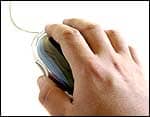
Treatment Procedures with Tri-Sectional Arches
Arthur L.Wool, DDS
Wyomissing, Pa
The tri-sectional arch by Modern Arch corrects orthodontic problems with low force. The arch is available in rectangular and square anteriors and posteriors, and may be used in any bracket system, including .018- or .022-inch slots. The arch complements free-sliding, self-locking brackets.
My personal experience using arches with rectangular anteriors and reduced posteriors spans 40 years. The style that is used today features a variety of anterior alloys combined with reduced steel square posteriors. The steel posterior segments have resistance to deformation under any load. Anteriors are normally made of steel, although nickel titanium and beta-titanium are also available.
When placing a tri-sectional arch during posterior sliding treatment, avoid using elastomerics on any posterior brackets through which the arch is to slide. Elastomeric rings produce a great deal of friction and hamper retraction and space closure. Do not forget that not one gram of tooth-moving force is available until after all friction requirements are met. Keep it light, keep it simple. Do not hamper yourself with binding mechanics; a bird cannot fly with an anvil around its neck.
The rectangular anteriors allow retraction with any degree of anterior axial control desired. This is achieved by size selection of anterior arch segments as well as bowing (accentuating the curve of the spee in the upper arch) or not bowing the posterior segments. The square end segments, when bowed, have a natural tendency to bow-in as whipped between the fingers. This bowing-in is advantageous in that it prevents the natural tendency of a bowed arch to flare the posteriors and lift buccal cusps in the posterior dentition. The arch itself assumes a shape like that of a reverse-curve arch and is shaped like a saw. When one end of a seesaw goes down, the other end goes up. This is true with an arch as well. Bite-opening may be substantially enhanced by holding down the posterior end of the upper arch. This potentially opens a deep anterior bite. The holding down of the posterior of the upper arch is accomplished using a boxed posterior elastic, which is placed bilaterally.
The elastic hook-up for the boxed posterior elastic is from the upper molar to the upper bicuspid to the lower bicuspid to the lower molar. This presupposes that the lower arch is set up. The lower arch and dentition is used as a guide to the final placement of the upper dentition. The retraction of the upper anteriors is enhanced by the upper arch bowing without any additional retractive force placed upon the upper anteriors. This retractive force comes through the efforts of the bowed upper arch, which is trying to intrude into the upper molar. A three-rooted molar is not easy to intrude. The intrusion is offset by the boxed posterior elastics. The flaring is also offset by the toeing-in.
During this procedure, the upper arch should always be allowed to protrude a bit beyond the end of the buccal tube. This prevents the arch from getting stuck in the tube. If this occurs, say goodbye to any retraction. The upper arch is now pressing against the buccal tube, is bowed, an end is protruding, and a force vector is produced, which encourages the arch to creep backward, out of the buccal tube. This light retractive force induced in the upper arch is substantial enough to move the bowed arch distally without any supplemental force. You are ahead of the game without trying.
- Do you have a pearl to share with your colleagues? Please send it toalong with your headshot and any other pictures you would like to include.
If the retraction required is substantial, there is always the tendency for dishing-in the anteriors, depending upon their axial inclination prior to retraction. As the bowed upper tri-sectional arch is lowered into the anterior bracket slots, its action during retraction is to behave as if it has supplemental torque across the anterior segment, even when there is none. It is like achieving torque action without trying—you are ahead of the game for the second time!
A case with pronounced upper protrusion and little angulation is more difficult, and all care should be taken to prevent dishing-in, which becomes a real possibility. With such cases, I reach for one of the tri-sectional arches that comes with supplemental torque across the anterior segment. These pretorqued arches have anterior segments that are made with 20° of torque and are available in two different arch slot sizes.











